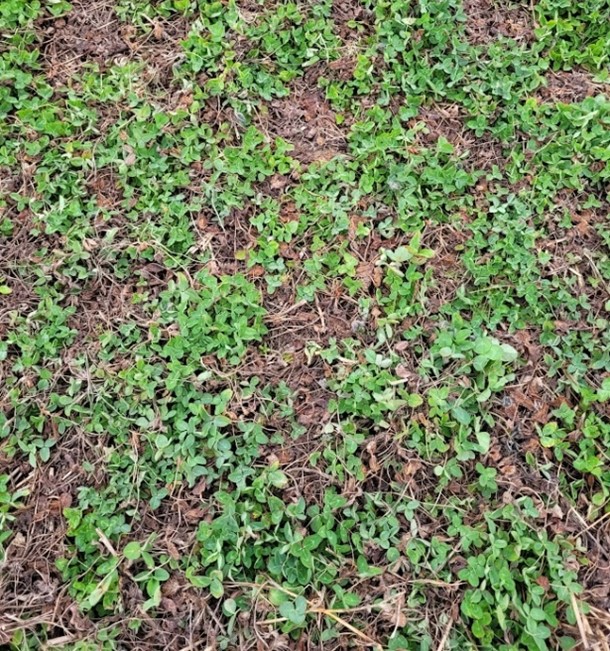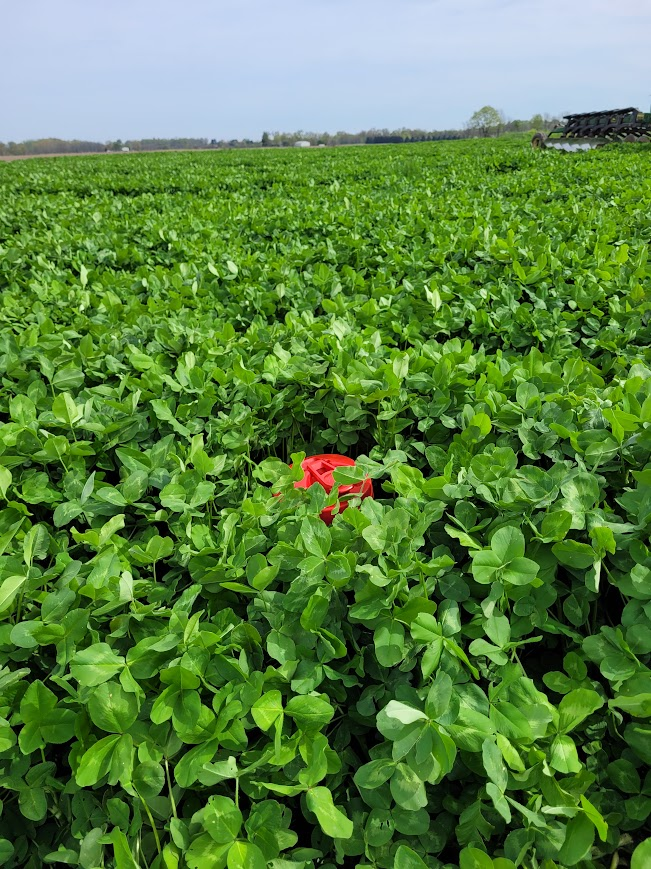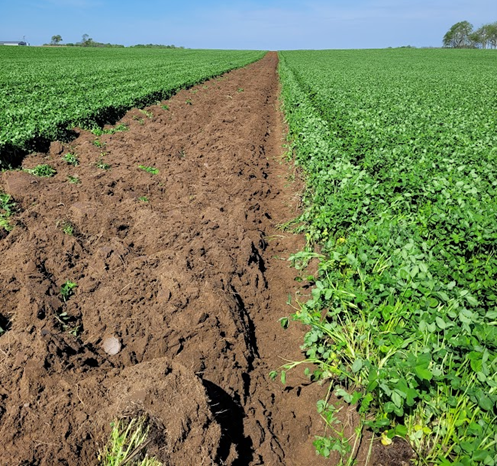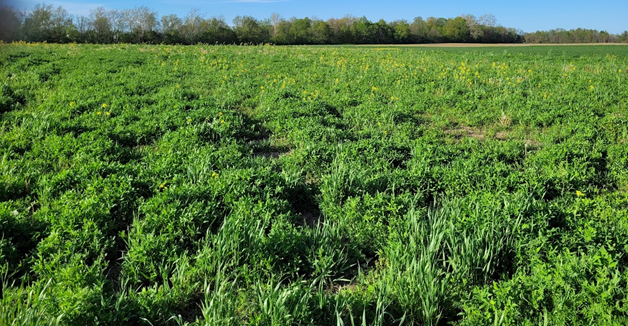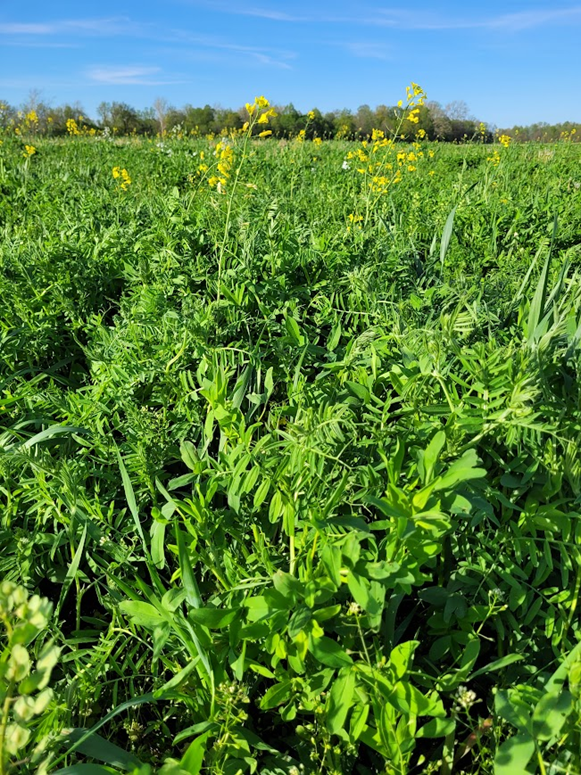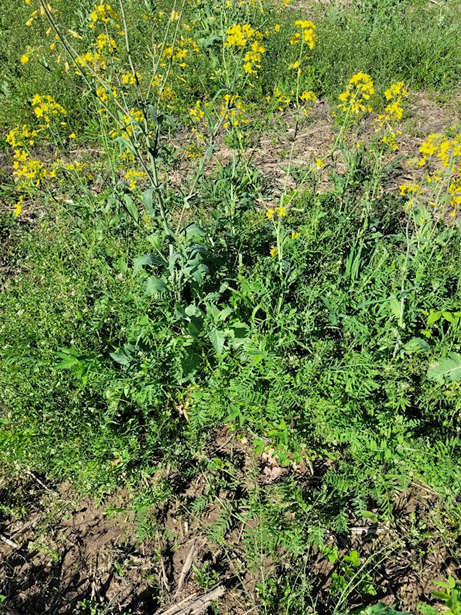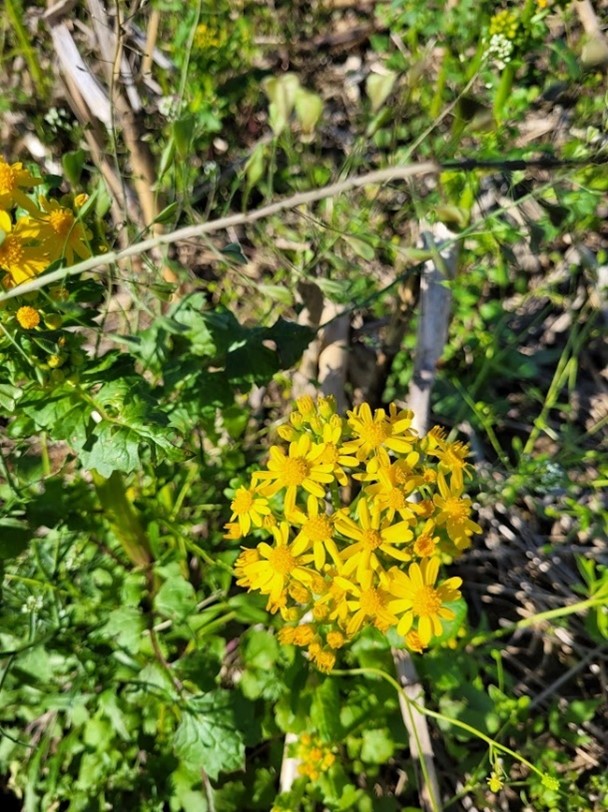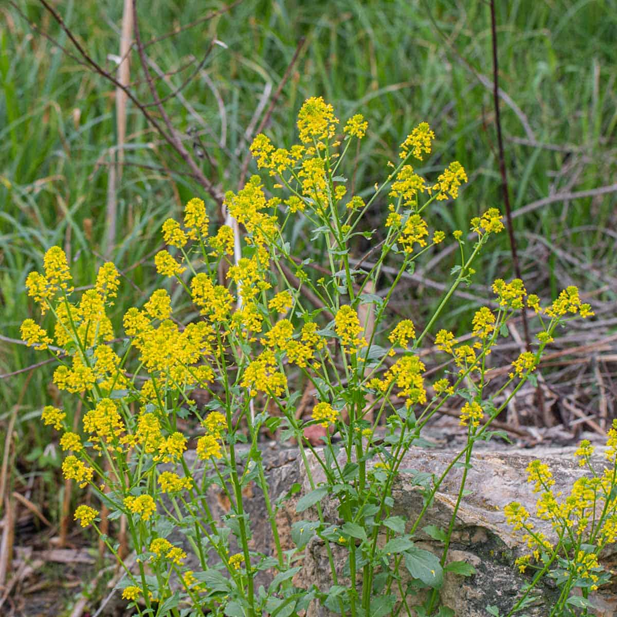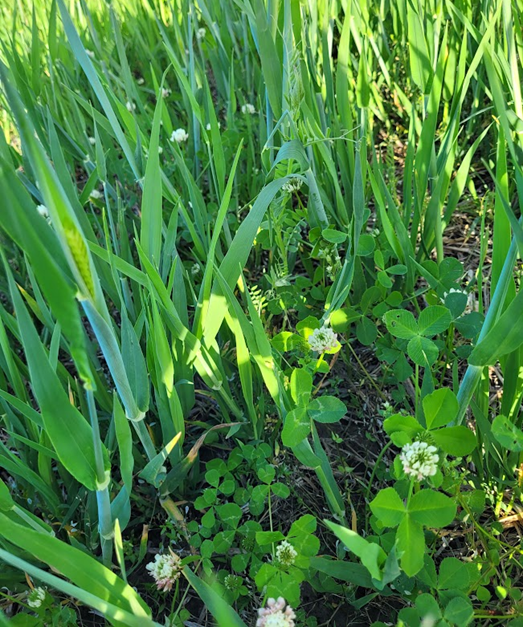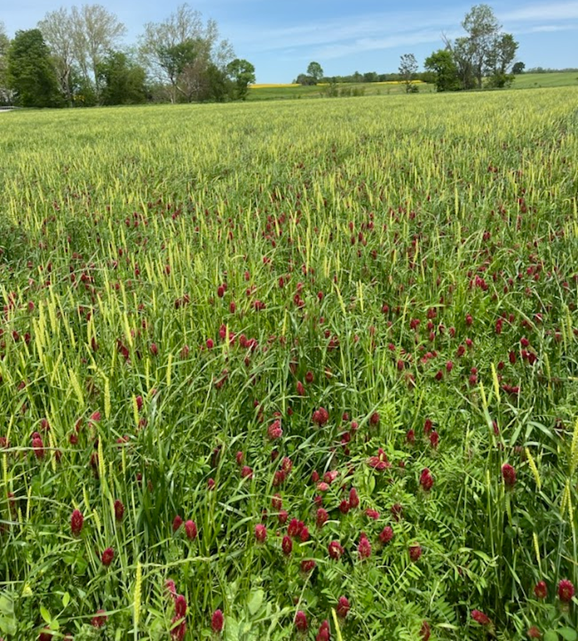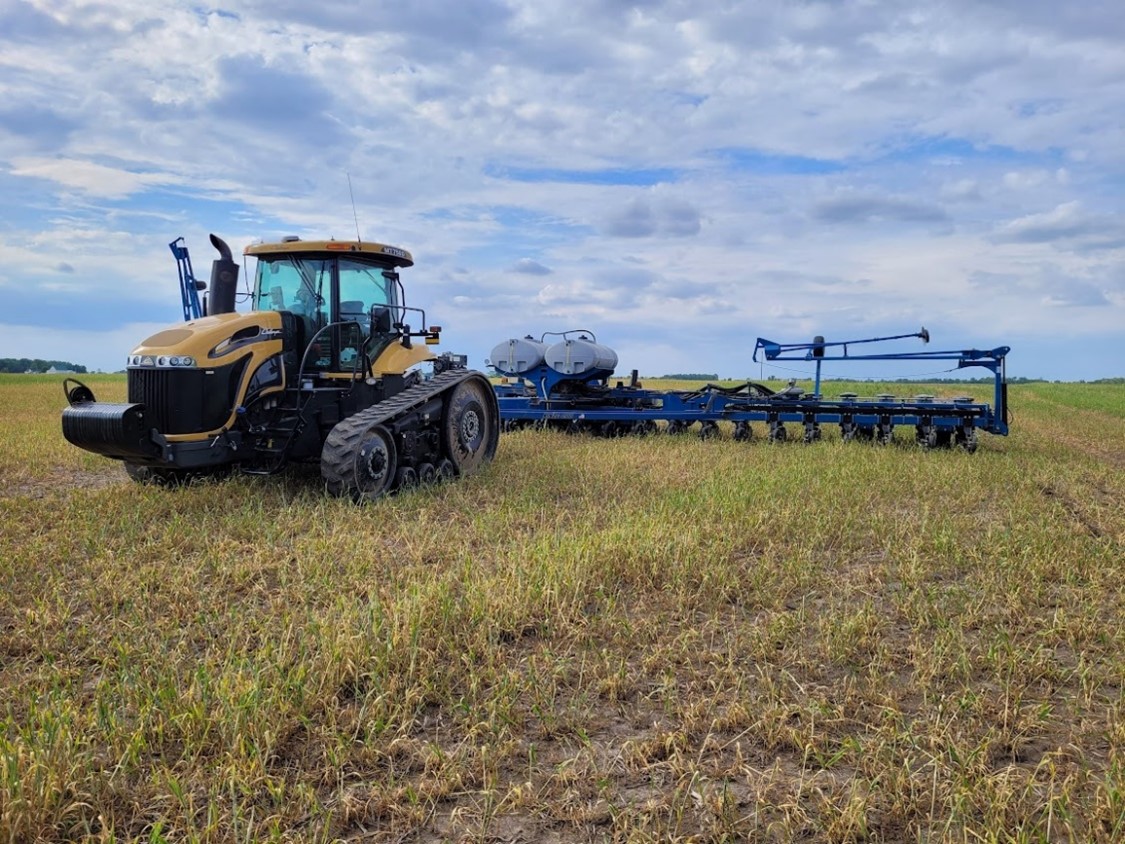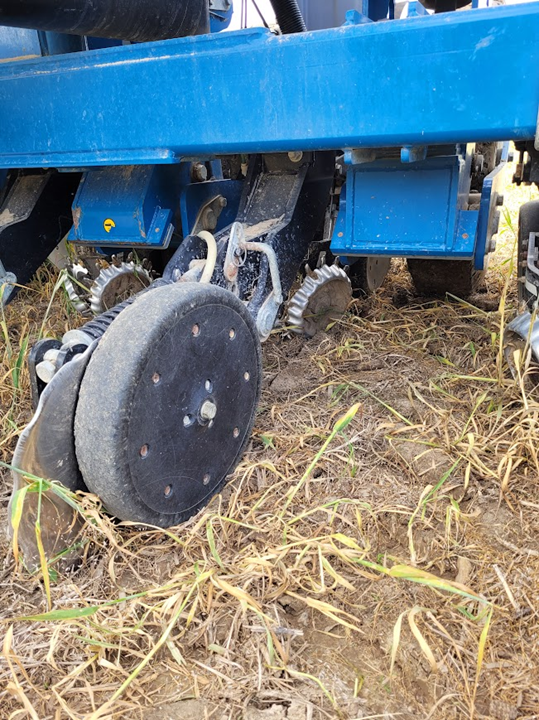Frost-seeded Bearcat medium red clover
Red clover frost-seeded into winter wheat 14 months ago grew very well in early spring. It broke dormancy quicker and yielded better than any other clover species I tried. The pace of red clover growth may have been slower than balansa on the date of termination, but the red clover had enough of an earlier start that it had about 30% more biomass at termination. Medium red was also the top choice for suppressing weeds after wheat harvest.
These pictures are from the field I frost-seeded into growing winter wheat on March 17, 2023, at 15 lbs per acre. We clipped it for weed control in July and harvested it for hay in September 2023.
We broadcast 2 tons per acre of chicken manure on April 17th. Most of it was rained in before we had a chance to plow it under. Check out the growth that was added in 5 days with a warm rain and manure application. Don’t drop your water jug!
A major benefit of an actively growing cover crop is the removal of excess soil moisture by photosynthesis/transpiration. We were able to plow this field of clover in good conditions when it was far too wet to be on other ground. This farm was split evenly between cover crops and chisel-plowed cornstalks. The moisture difference between chisel-plowed cornstalks and this clover field was so significant that we could not drive on the cornstalk field the day that the clover was plowed.
Summer-seeded Cover Crop after wheat
This cover crop was seeded after a period of mechanical fallow following an organic wheat crop in September 2023. It was a diverse mix with ingredients that both winterkilled and overwintered. The overwintering ingredients were volunteer wheat, hairy vetch, berseem clover, and Bayou kale.
Berseem clover worked much better summer-seeded than frost-seeded. I was impressed and will use it for this purpose again.
Weed Misidentification
Many of our customers have been seeing cover crop brassicas flower for the first time this spring. Turnips, radishes, and kale overwintered very successfully this year. They began growing early and the wet spring has pushed termination later than normal in many cases. Bonus cover crop growth is a good thing! These cover crops are easy to kill and pose no risk to future cash crops.
To distinguish between a brassica and a common toxic weed, look at the flower. Brassicas have a “mustard” flower while the most problematic look-alike weed has a “daisy” flower.
Here’s a blooming turnip (with hairy vetch).
Here’s Cressleaf Groundsell (with ragweed).
Cressleaf Groundsel is very prevalent in no-till fields and was definitely, absolutely, 0% present in your cover crop seed. This weed completes its life cycle long before cover crop seed fields would be ready for harvest and has a downy dandelion-like seed. Cover crops do an excellent job of suppressing this weed, as well as the ragweed growing alongside it. Cressleaf Groundsel is fairly easy to control, but does cause some moderate annoyance in row crop fields: It matures quickly and keeps the ground wet by blocking sunlight without transpiring much water. Its downy seeds are also terrible for plugging tractor radiators on a warm planting day.
Cressleaf Groundsel can be a bigger problem in forage fields. It is toxic when found in abundance in thinning hay fields. It’s really having a good year this year – so please do familiarize yourself with this weed.
Again, the best way to identify this weed and describe it to a customer is by looking at the flower.
Yellow Wintercress, aka Bitter Wintercress, aka Yellow Rocket is a weed in the mustard family – just like many of our cover crops. This cover crop look-alike is harmless. It’s got a classic mustard flower and some foraging humans even like to eat it:
Cover Crops after soybeans
I planted legume-containing cover crops after our earliest soybean variety last fall. Most were seeded during the first week of October 2023. The base of these mixes was Valor barley and Pategonia hairy vetch. The barley turned out thicker than I had planned. I think every seed grew, survived the winter, and tillered!
Variation on a theme
Here’s a simplified mix that had a lower rate of grass components and skipped the brassica.
Burndown & Planting
*Opinion Alert* From here on the lines between accepted agronomic best practices and the flavor of crazy that I prefer get blurry. Farming is an art as well as a science, so keep an open mind.
Normally I advocate for planting green. However, in the first picture, I had a thicker grass component relative to legume than I had expected and it was beginning to set seed. It was sprayed the day after the picture was taken and I planted it 5-13-24. Conditions were wetter than ideal, but I was fearful of planting into a “zombie” cover crop. Zombie cover crops are alive enough to block the sun from drying out the ground, but dead enough not to use any water.
No-tilling into a cover crop means that the cover crop will decompose more slowly than when tilled into the soil. Because the grass did its job and soaked up the residual nitrogen, the corn crop will initially have lower N availability than if I had tilled bare bean stubble. I’ll get that N back, plus more from the legumes later, but for today we are N deficient. Cover crops also keep the ground cooler than tilled soil. For these reasons, I believe a row starter is very important. More is better. Fertilizer applied with the planter can be subtracted from other places in the program. Here I’m putting on 14 gallons of 18-12-2-4S placed 2” beside the row, 4” deep. I really like banding fertilizer and placing it far enough away from the seed to avoid salt injury.
I prefer row cleaners to ripple coulters on my planter. Here, I am using them aggressively to move the barley plants away from the row to make a smooth path for my depth wheels. This also opens a path for sunlight. Using down pressure here negates the down pressure placed on the seed opener, so I also have the down pressure springs on the parallel linkage set higher than normal by one setting, or two Kinze spring settings higher than I like for tilled ground.
Closing the seed trench can be tricky in no-till with cover crops. I like to run 1 spiked closing wheel paired with 1 rubber tire. This gives aggressive closing action with depth control provided by the rubber tire. While I am a fan of good down pressure in the front of the planter, I don’t like it on the closing wheels. I very rarely run anything but the lowest two settings. Success to me is a clean seed row, with a crumbly, fully closed seed trench. The very best no-till has the seed thinking it’s in tilled soil and tractor driving like it’s on sod.
Thanks for taking my virtual farm tour!
Article posted by Dustin Johnson.
Questions? Don’t hesitate to get in touch with us.

